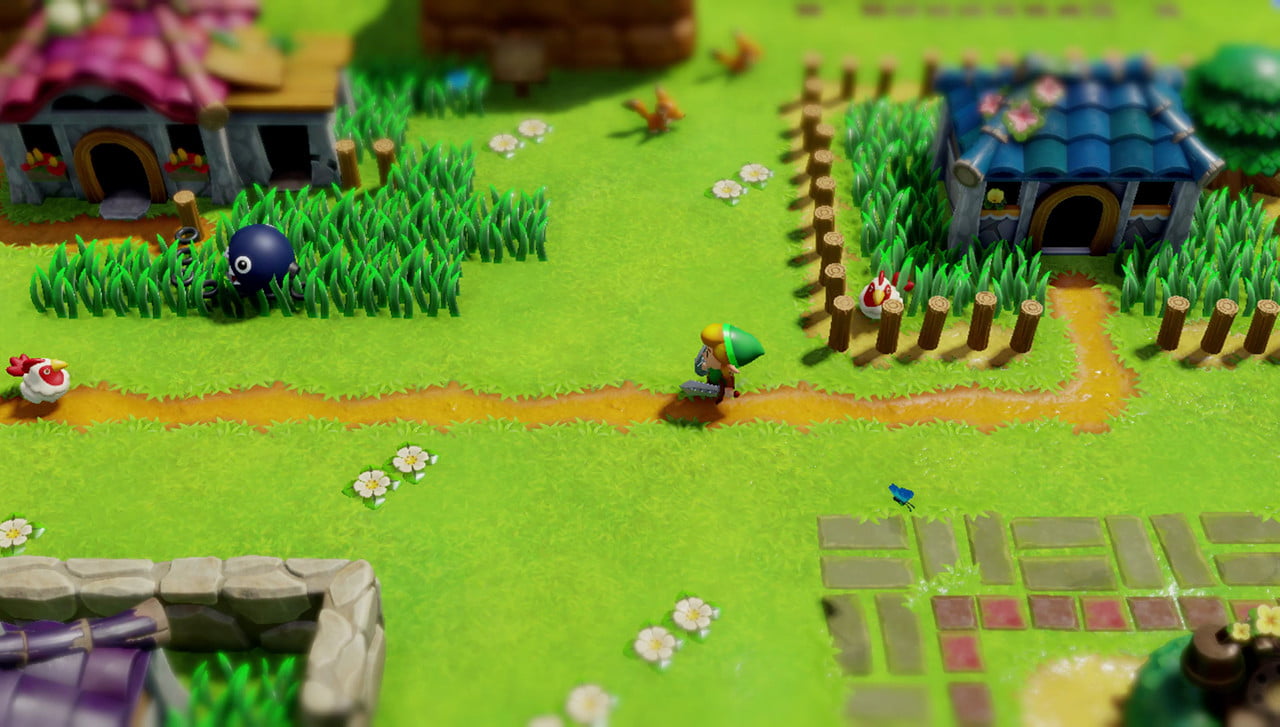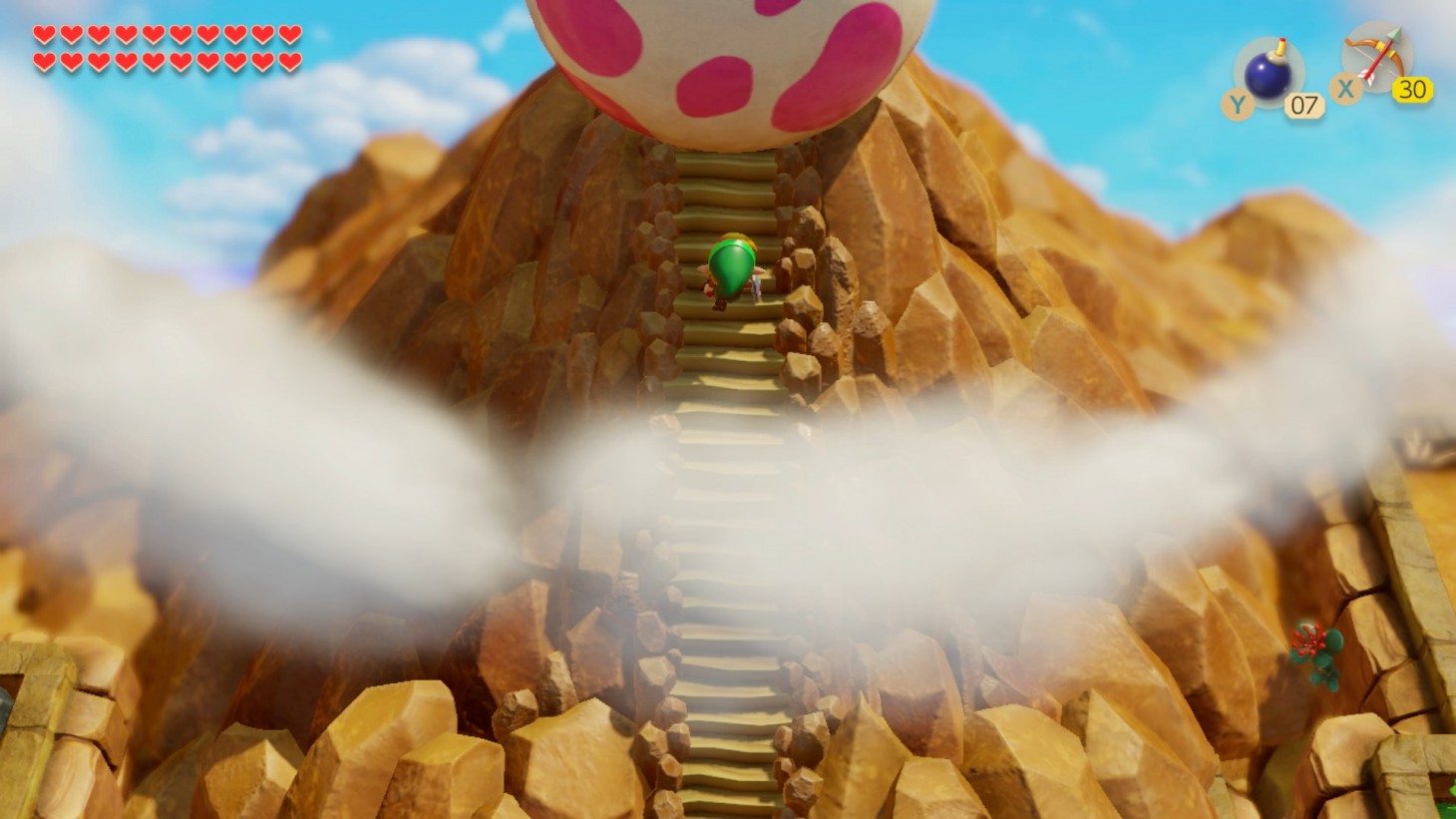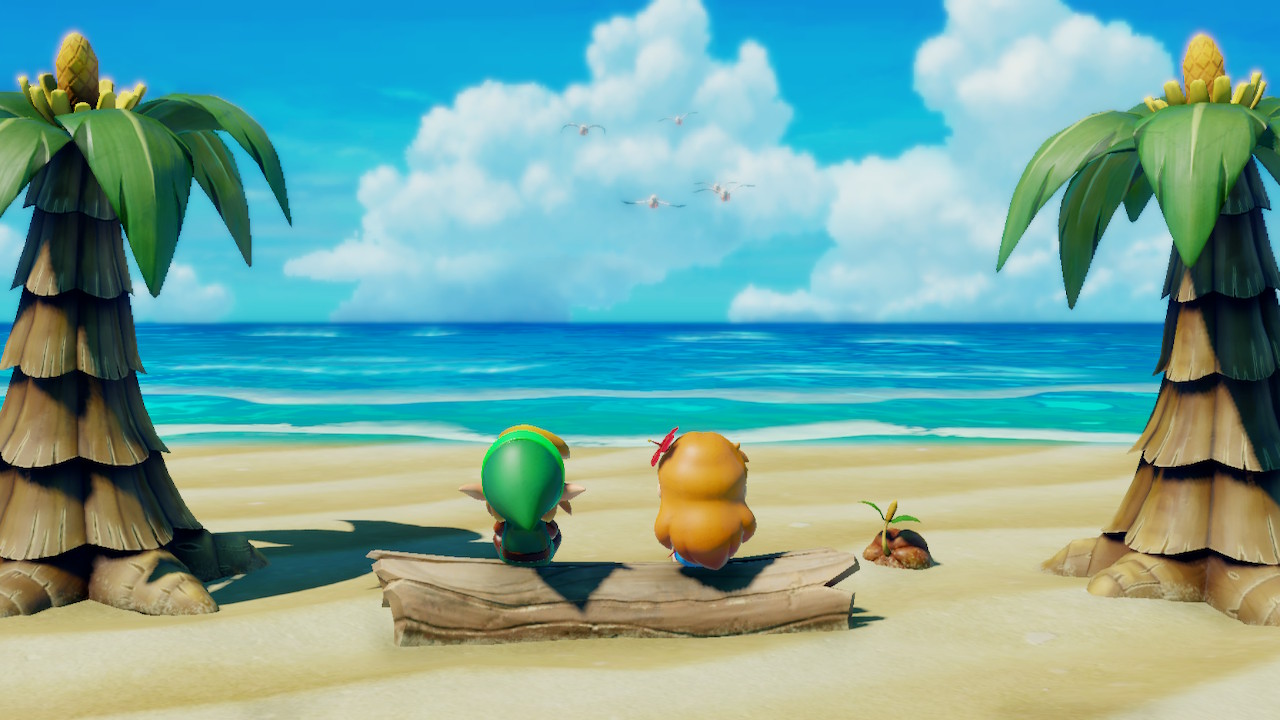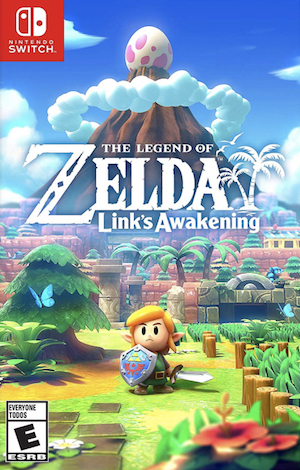
The Legend of Zelda: Link’s Awakening on the Nintendo Switch is an extremely faithful remake. Whether that’s on a macro scale, in terms of its progression and its story and the way that plays out, or on a micro scale, in terms of the placement of every single thing in the game’s world, from the rocks to the trees to the enemies you come across- this is a remake that has great respect for its source material, and for its ability to hold its own even more than two decades on from its original release.
That respect is well-earned. If there’s one thing Link’s Awakening on the Switch shows us, it’s that the quality and charm of the original Game Boy classic truly are timeless, and the passage of time has done nothing to make the game any less impactful than it was when it first came out. Link’s Awakening’s devoted and faithful recreation of the original exposes some flaws, but on the whole, what we have here is the perfect way to jump back into this beloved classic for those who’ve played the original, and the perfect way to experience it for the first time for those who haven’t.
"If there’s one thing Link’s Awakening on the Switch shows us, it’s that the quality and charm of the original Game Boy classic truly are timeless, and the passage of time has done nothing to make the game any less impactful than it was when it first came out."
One of the biggest concerns most people had about this remake was that the whimsical charm and simultaneously uneasy and quirky atmosphere of the original game would be lost in the transition to high definition, that an excess of detail and the absence of hardware restrictions would lead to a game that does away with the things that made Link’s Awakening so good. Those were, after all, the best aspect of the game- thankfully, they still are. Koholint Island, its inhabitants, and all of its locations have been brought over pretty much as is.
That oddball self-referential dialogue that permeated through the original Link’s Awakening is still here in all its glory, lending the characters you run into the kind of personality and charm that isn’t easily achieved. From that canned food-loving alligator to those boys playing catch to the whacky inhabitants of Animal Village, all the weirdos of Koholint Island that you were mystified by and fell in love with all those years ago are still here.
More than anything else though, it’s Link’s Awakening’s visuals that deserve the most credit for managing to keep the game’s feel and atmosphere intact. The simplistic and limited sprites of the original managed to convey a strong sense of place and personality against all odds, and the remake employs a unique aesthetic to deliver something that does the same while going about it very differently. Toy-like characters, enemies, and flora are placed within a diorama-like world, which the game displays with tilt-shift visuals and purposefully excessive blurring on the edges.
"More than anything else though, it’s Link’s Awakening’s visuals that deserve the most credit for managing to keep the game’s feel and atmosphere intact. The simplistic and limited sprites of the original managed to convey a strong sense of place and personality against all odds, and the remake employs a unique aesthetic to deliver something that does the same while going about it very differently."
The effect it achieves is nothing short of brilliant, and one that fits with the setting and premise of the game perfectly. There are some frame rate drops here and there, but they’re pretty minor for the most part- if I hadn’t gone into the game without knowing that it’s supposed to have performance issues, I probably wouldn’t even have noticed them. And it’s not just the visuals that impress. Music is an important part of any Zelda game, and so it was in Link’s Awakening as well. Fans of the remake will be glad to know that that music is brought into the modern age with excellent results here, striking exactly the kind of balance between old-school and modern that you’d want it to strike.
Also present and accounted for is Link’s Awakening’s strong world design. You’d think that after exploring the vast and majestic landscapes of Hyrule in Breath of the Wild, going back to a game world that was created for rudimentary handheld hardware in 1993 would make for a lacklustre experience- but that isn’t the case at all. Back then, Link’s Awakening’s Koholint Island was a dense and varied world full of engaging things to see and do, and seemed much larger than it actually was, and that’s just as true for the remake. Exploring Link’s Awakening world is a constantly captivating experience, and age has done nothing to dull this setting’s glory.
The overworld, in fact, is a lot more fun to explore than the dungeons, which is where Link’s Awakening’s design begins to show its age just a tad. Hardware constraints back in 1993 meant that conceptually, Link’s Awakening’s dungeons had to be much more vanilla and pared back experiences than what the series established with its predecessor, A Link to the Past. Dungeons in Link’s Awakening are less about solving puzzles and more about either figuring out how to get out of certain rooms, or how to find a key to open a locked door. There’s still some item-gating in here, and the Metroidvania-style backtracking that leads to, but it’s not nearly as pronounced as other classic Zelda titles. Don’t get me wrong, the dungeons in the game are still good, and their actual design is solid, and some of the later dungeons boast an impressive level of complexity- but we’ve seen much better dungeons in Zelda games over the years. For instance, nothing in Link’s Awakening comes even remotely close to Ocarina of Time’s Shadow Temple.
"You’d think that after exploring the vast and majestic landscapes of Hyrule in Breath of the Wild, going back to a game world that was created for rudimentary handheld hardware in 1993 would make for a lacklustre experience- but that isn’t the case at all."
Link’s Awakening’s faithfulness to the original Game Boy title also means that you’ll have to deal with some decidedly old-school design that can be a bit frustrating. None of it detracts from the experience too much, but it still bears mentioning. Getting into some areas, for example, might require weirdly specific actions that are not always communicated properly, while there’s also a bit too much backtracking in the overworld (though this at least is not quite so grating thanks to warp points scattered across the map). Such things were easier to accept in games back when Link’s Awakening came out, mostly because they were par for the course, but in 2019, they feel unnecessarily old-school.
Link’s Awakening also makes plenty of quality of life improvements, which greatly improve the experience in some pretty fundamental ways. Owing to the fact that the Switch has a lot more buttons than the Game Boy did, your sword and shield are permanently equipped, as are a couple other items once you find them, which means you don’t constantly have to keep going into menus to switch your equipment. I would have liked to have jumping with Roc’s Feather become a permanent thing as well, but having to unequip and re-equip it repeatedly was never more than mildly annoying.
One area where Link’s Awakening tries something completely new that we didn’t see in the original is Chamber Dungeons. Inspired by the creation toolsets of Super Mario Maker, Chamber Dungeon allows you to stitch together rooms from the dungeons you’ve cleared to create dungeons of your own. On paper, it sounds excellent- but in practice, sadly, it’s really rather boring. The tools on offer are far too limited, and you’re restricted to using dungeon rooms exactly as you experienced them in the game. You have very little actual creative control, and all you’re essentially doing is connecting tiles to conjure dungeons that end up being thematic messes. The lack of freedom to do much (or anything) with these tiles is a missed opportunity, to the point where I’m left wondering why Chamber Dungeon even exists. The fact that you can’t share your creations with other players online makes the entire thing that much more pointless.
"Inspired by the creation toolsets of Super Mario Maker, Chamber Dungeon allows you to stitch together rooms from the dungeons you’ve cleared to create dungeons of your own. On paper, it sounds excellent- but in practice, sadly, it’s really rather boring."
That said, Chamber Dungeon feeling like a pointless addition really doesn’t detract from the package, which is still impeccably strong because of how great Link’s Awakening was and continues to be. While the shine is a little tempered owing to the limitations of the original game a showing a little, 26 years later, on the whole, Link’s Awakening is still delightful. For newcomers and returning fans alike, this is an adventure worth experiencing.
This game was reviewed on the Nintendo Switch.
Beautiful visuals, thanks to a stunning aesthetic; Excellent soundtrack; The original's iconic atmosphere is intact; Charming and quirky characters; A deceptively large, dense, and varied world that is always a joy to explore; Smart quality of life improvements.
Dungeons are mostly too simplistic and don't have enough puzzle solving; Obtuse old-school design occasionally breaks the pace; Chamber Dungeons are very limited, and not very engaging.




















